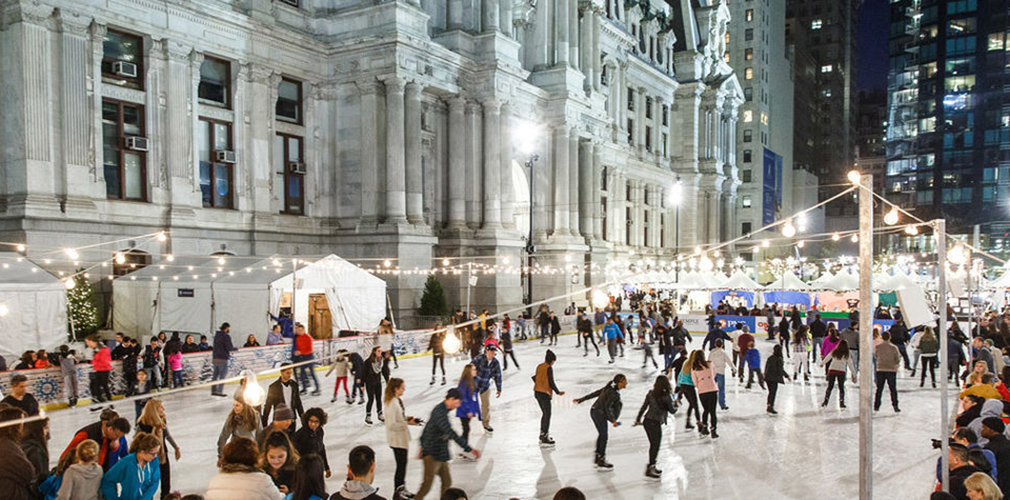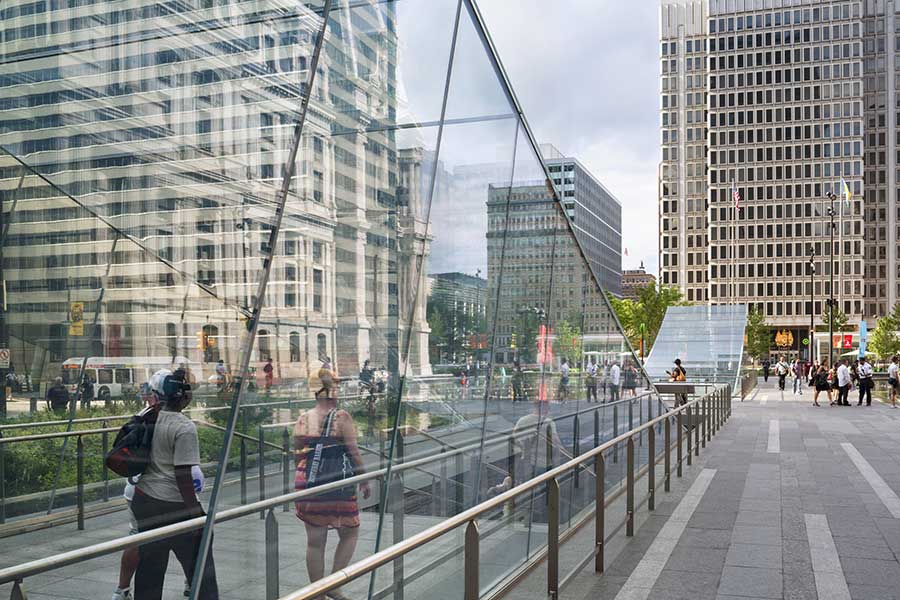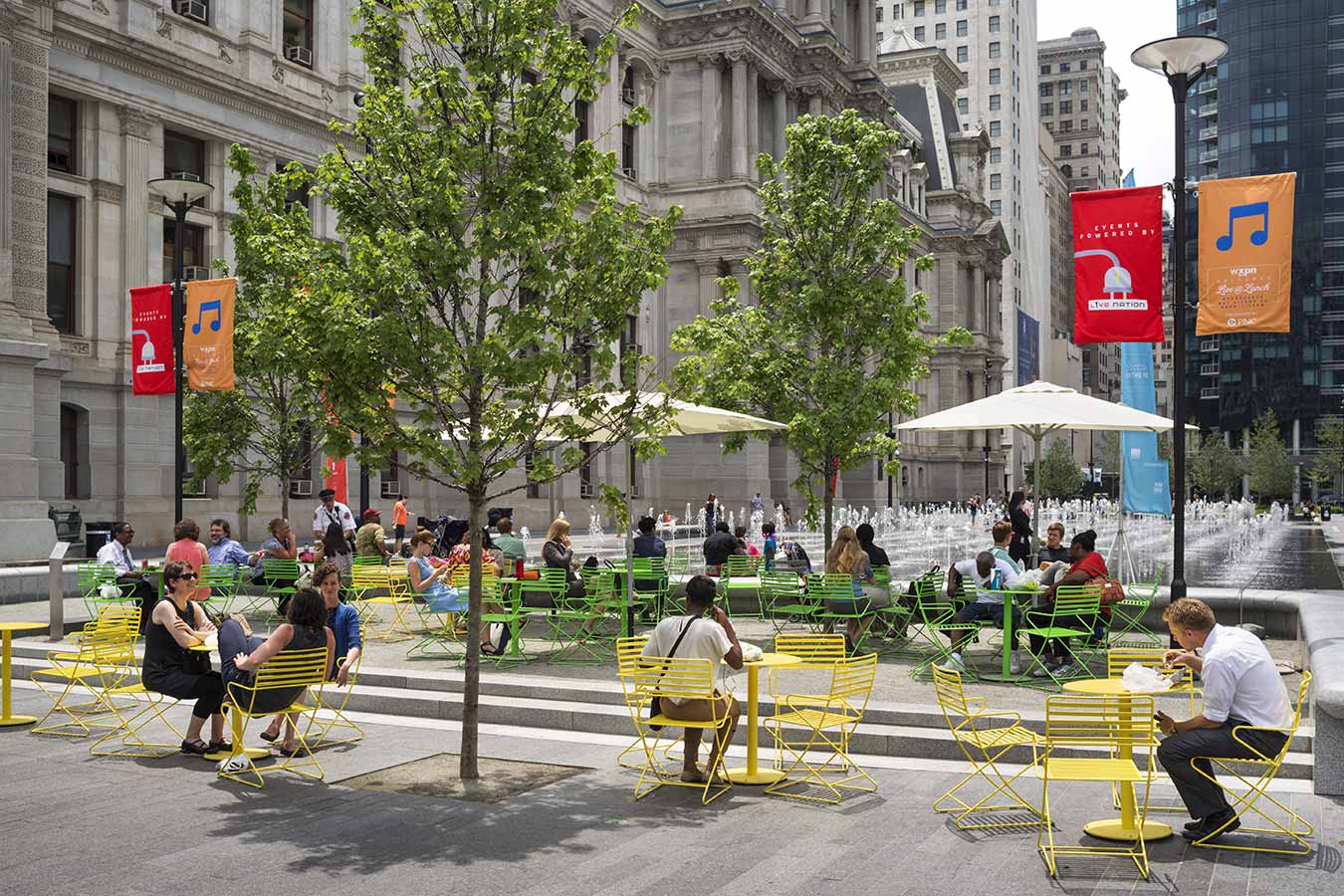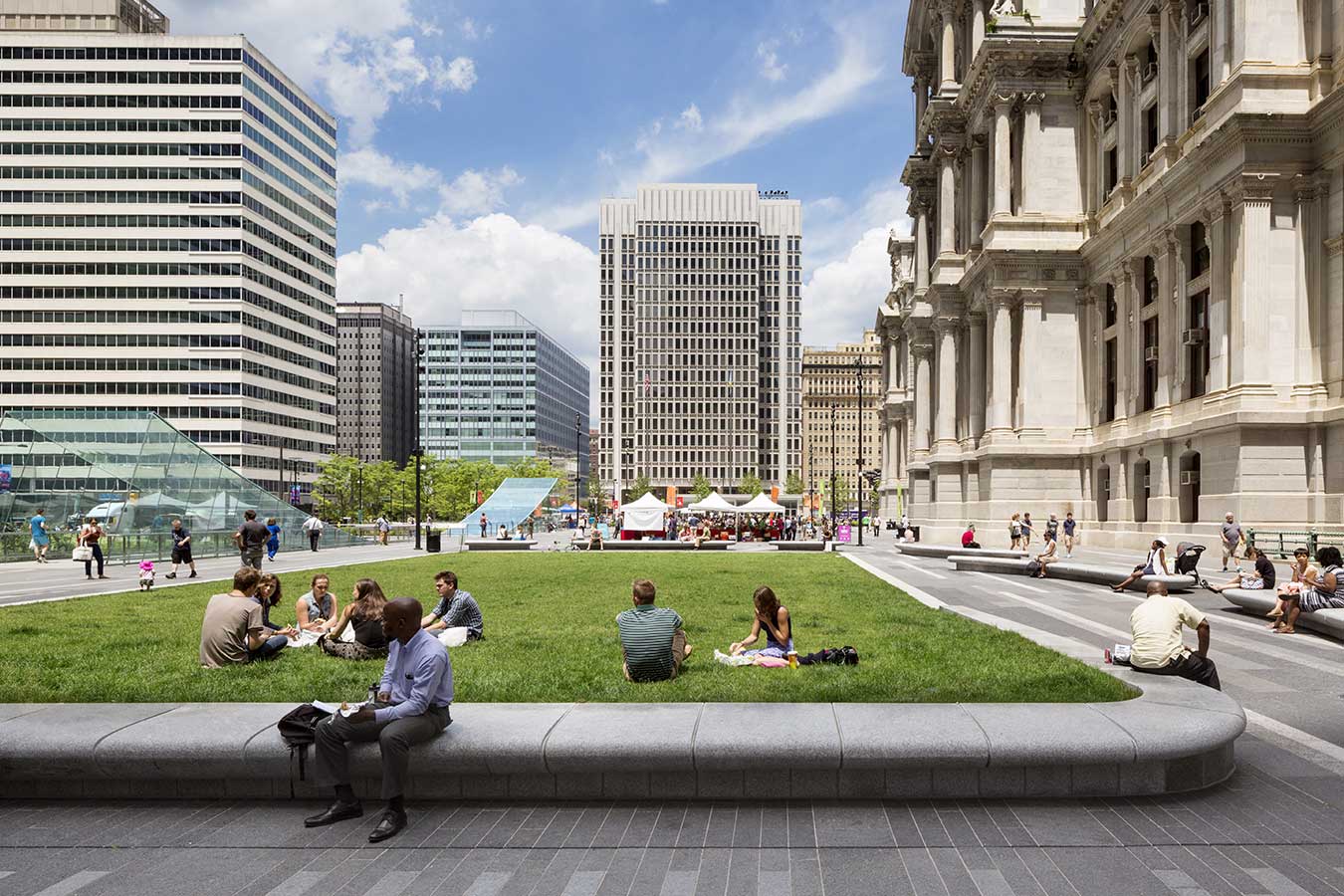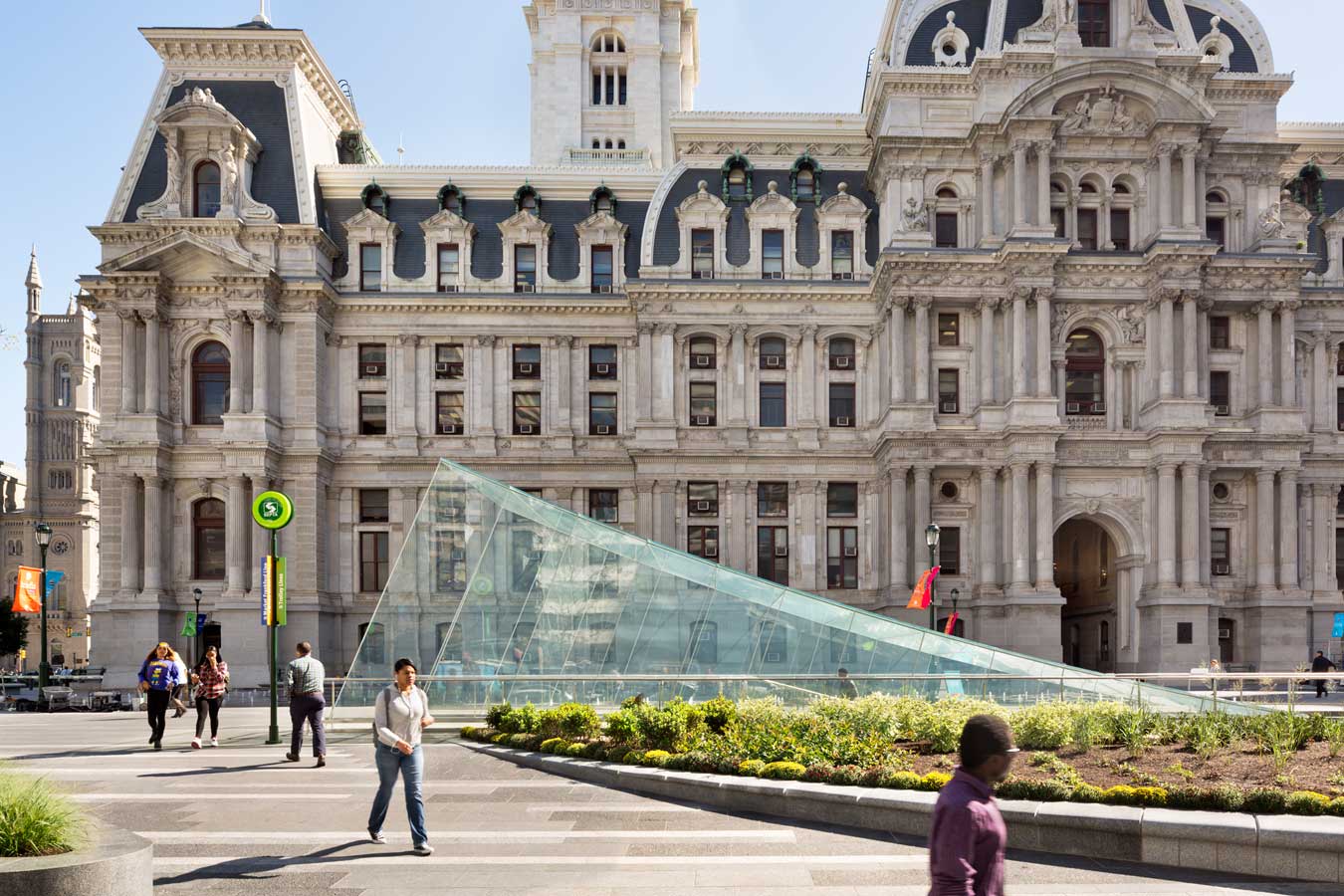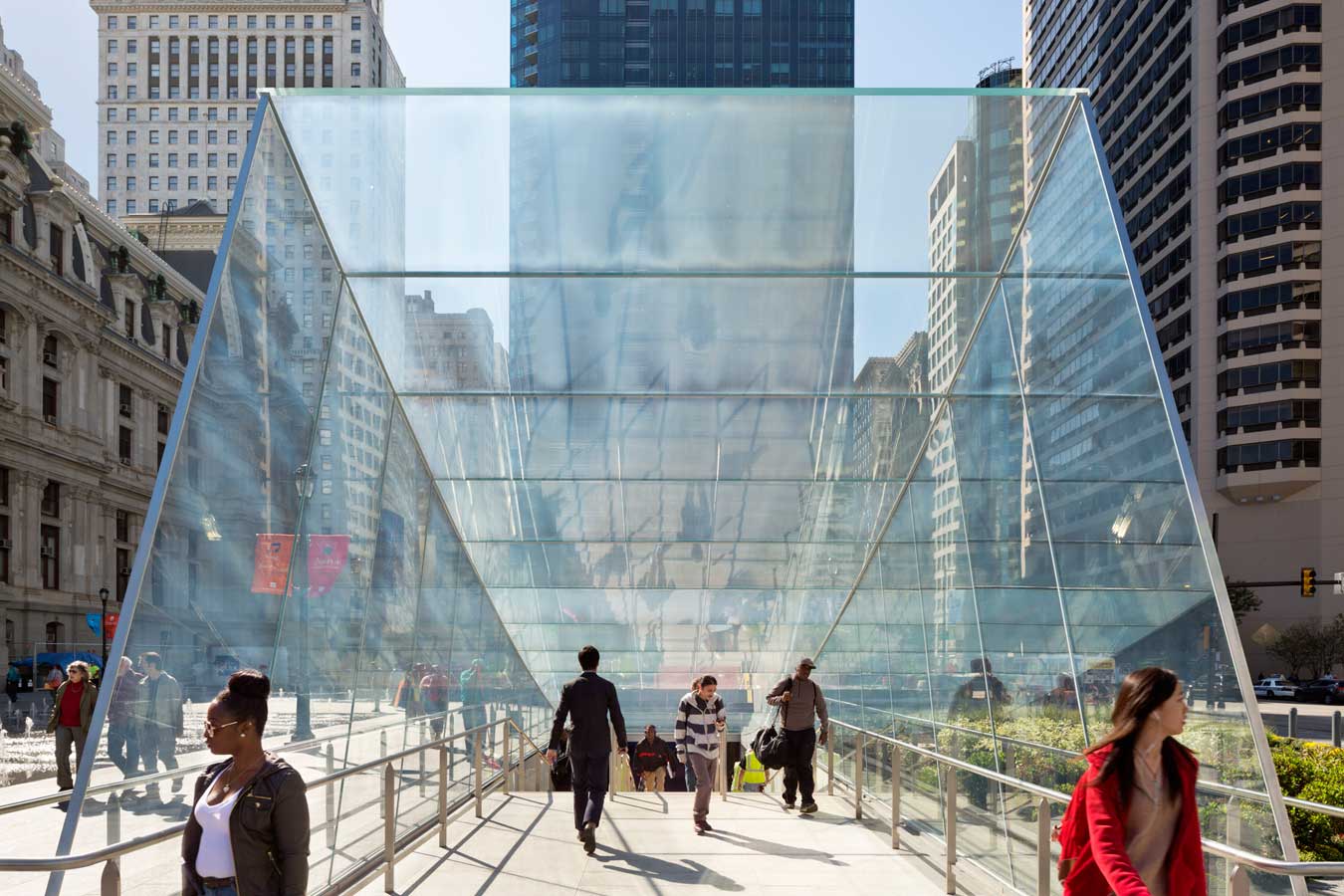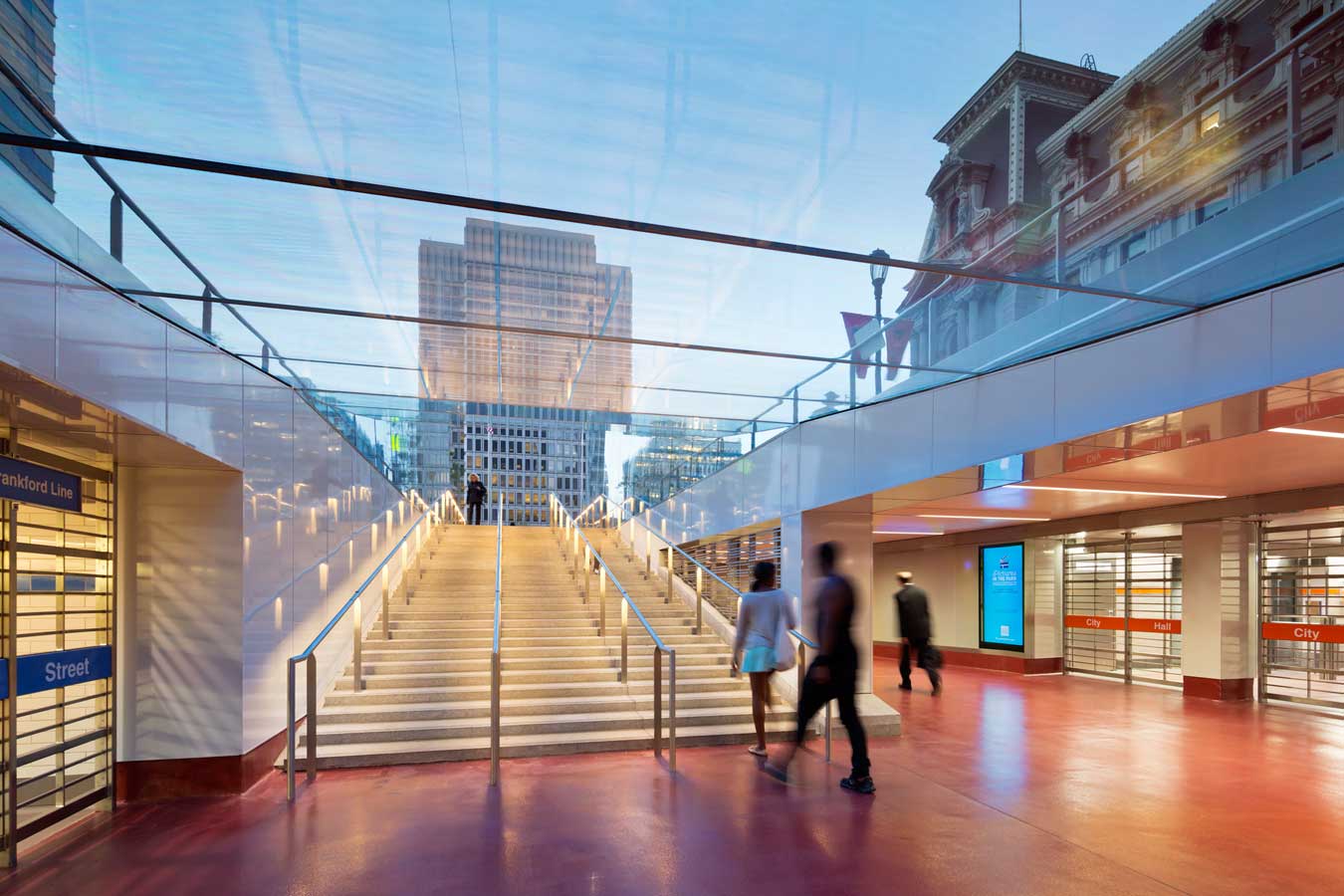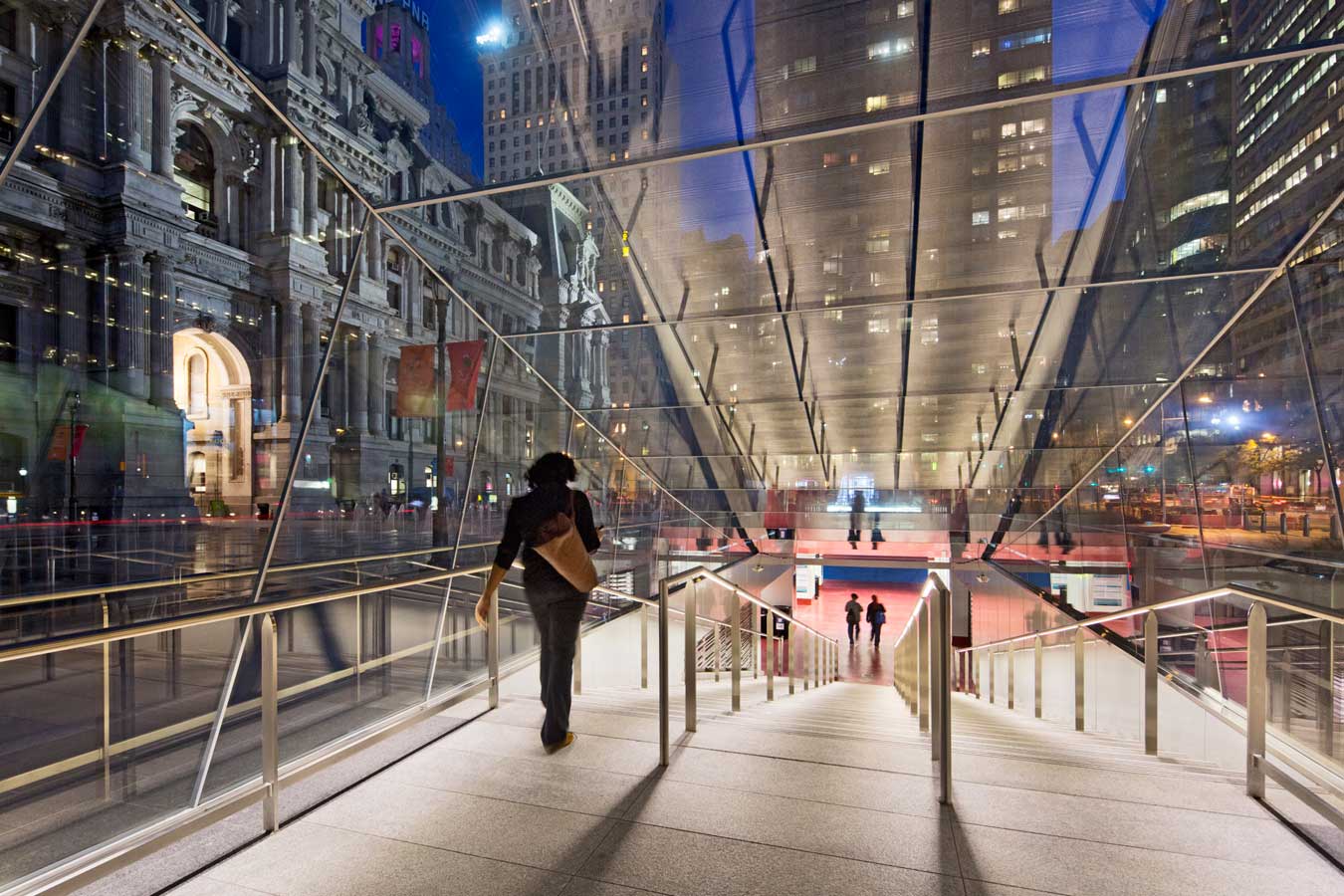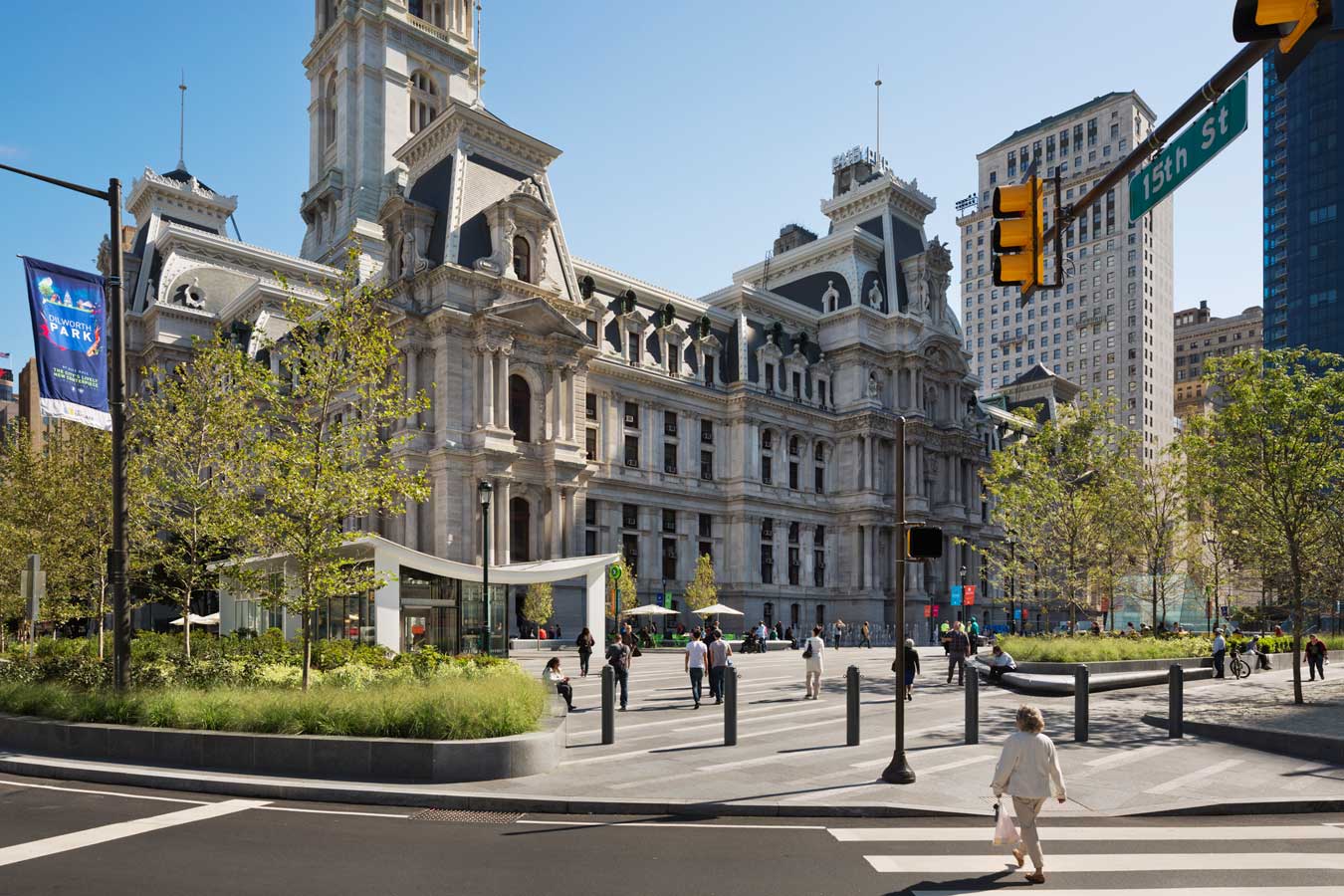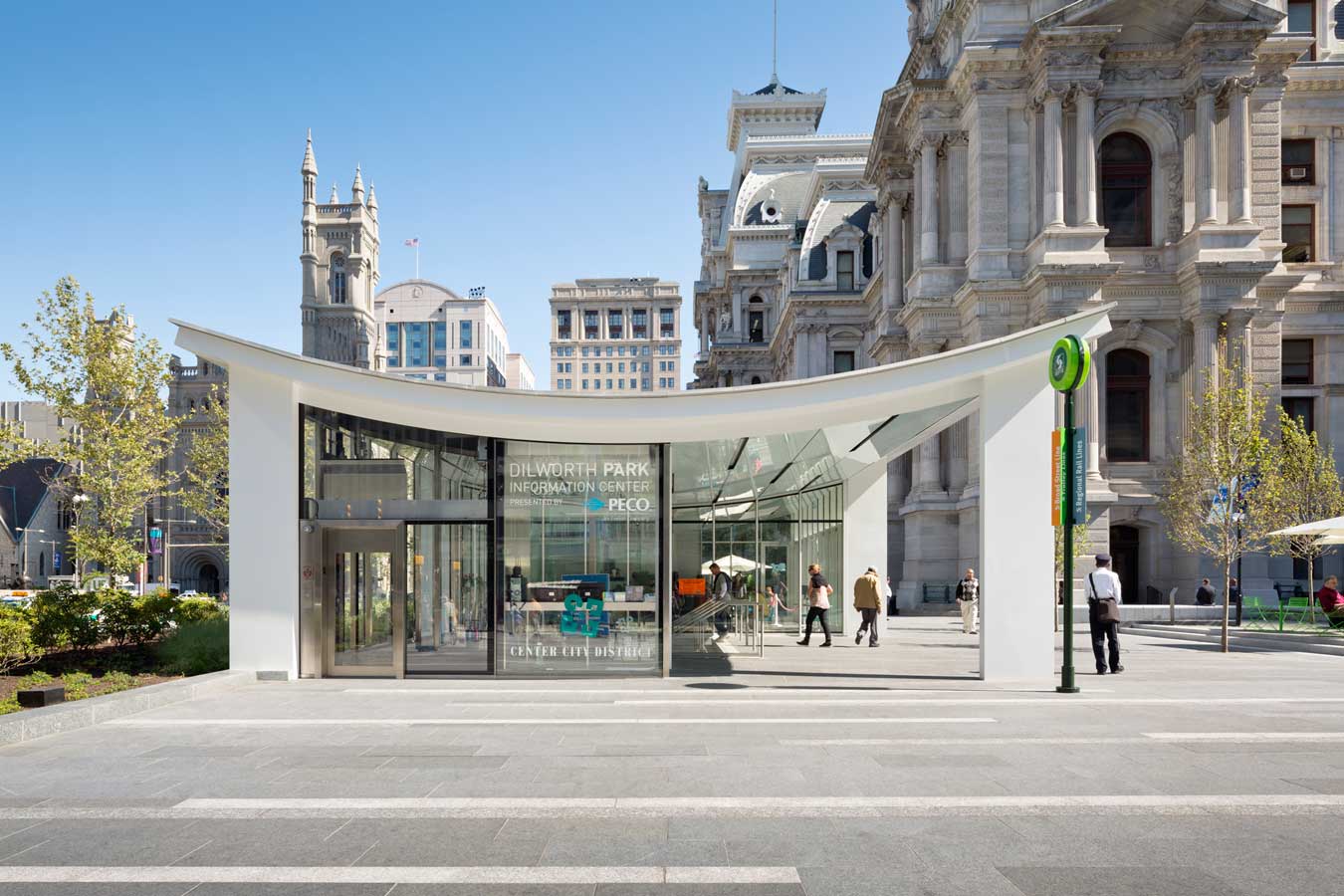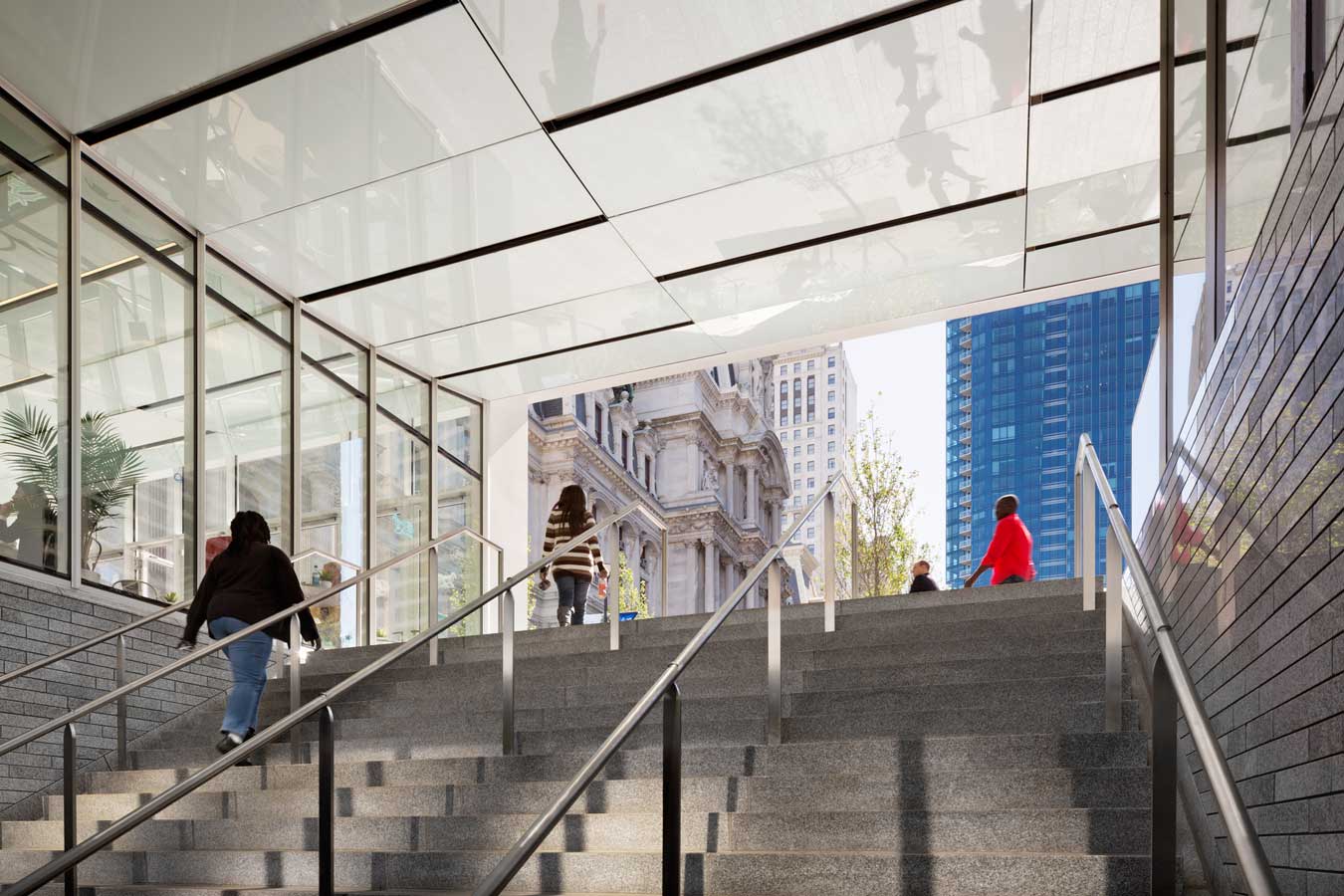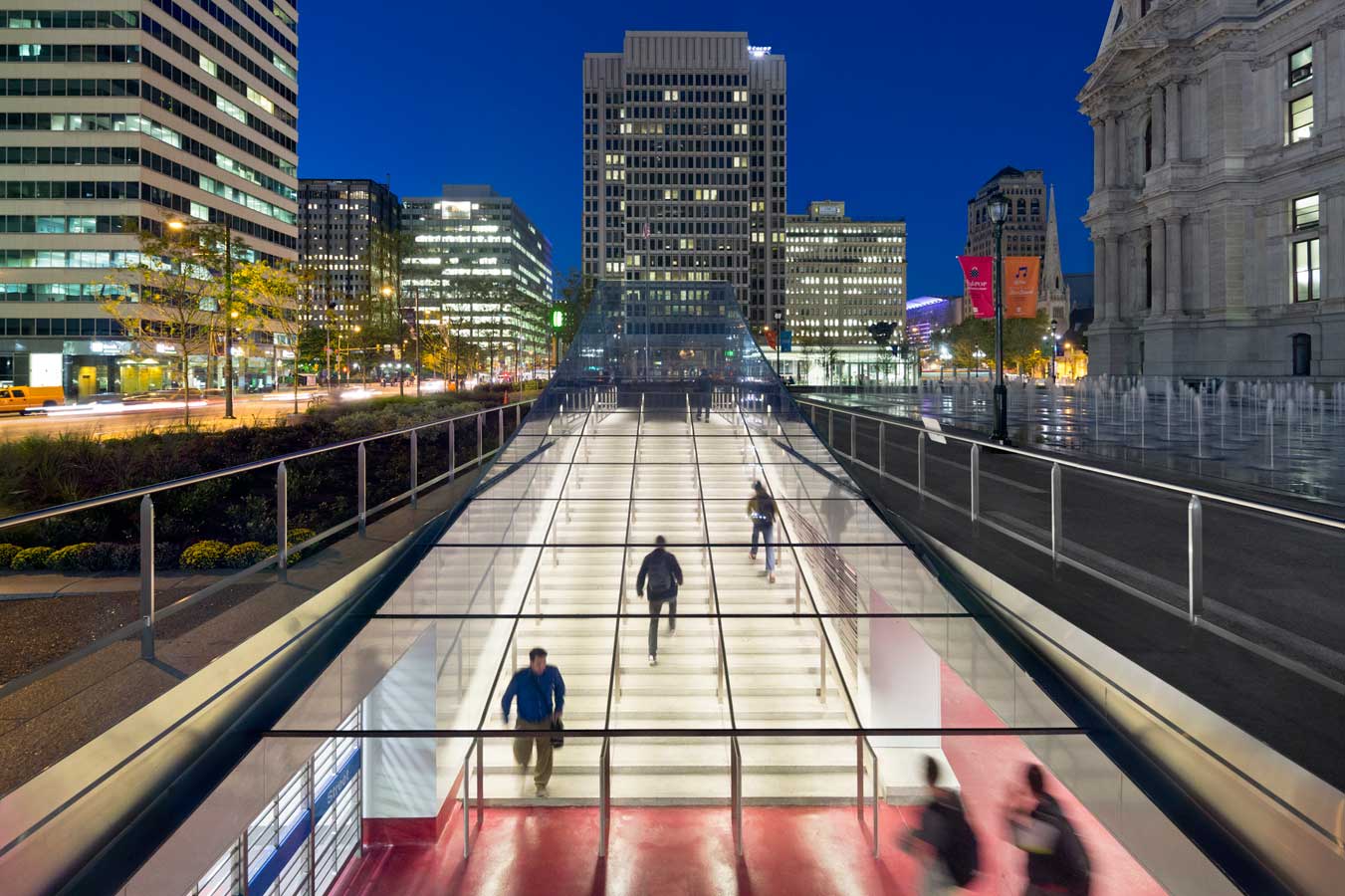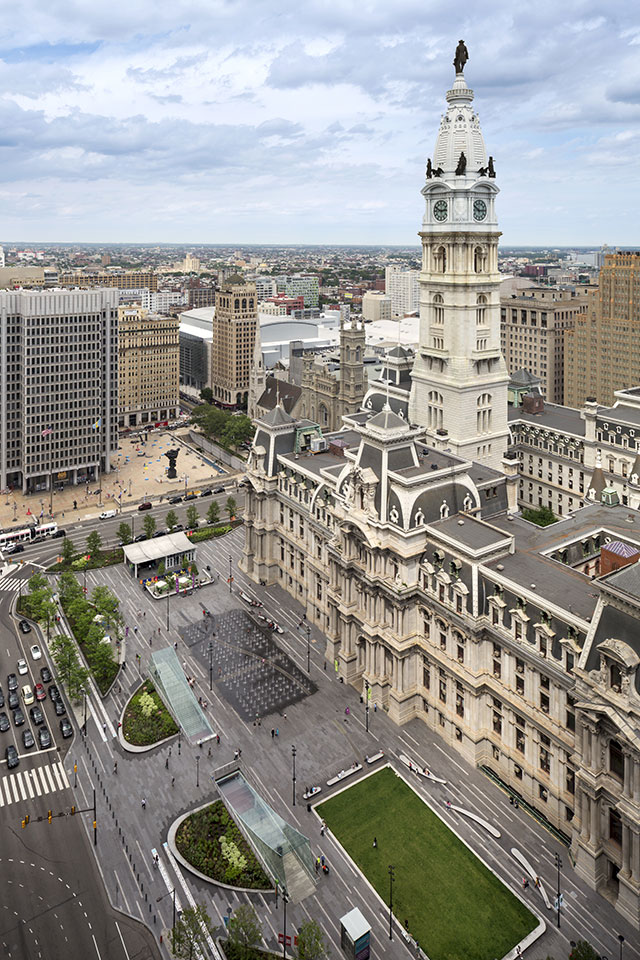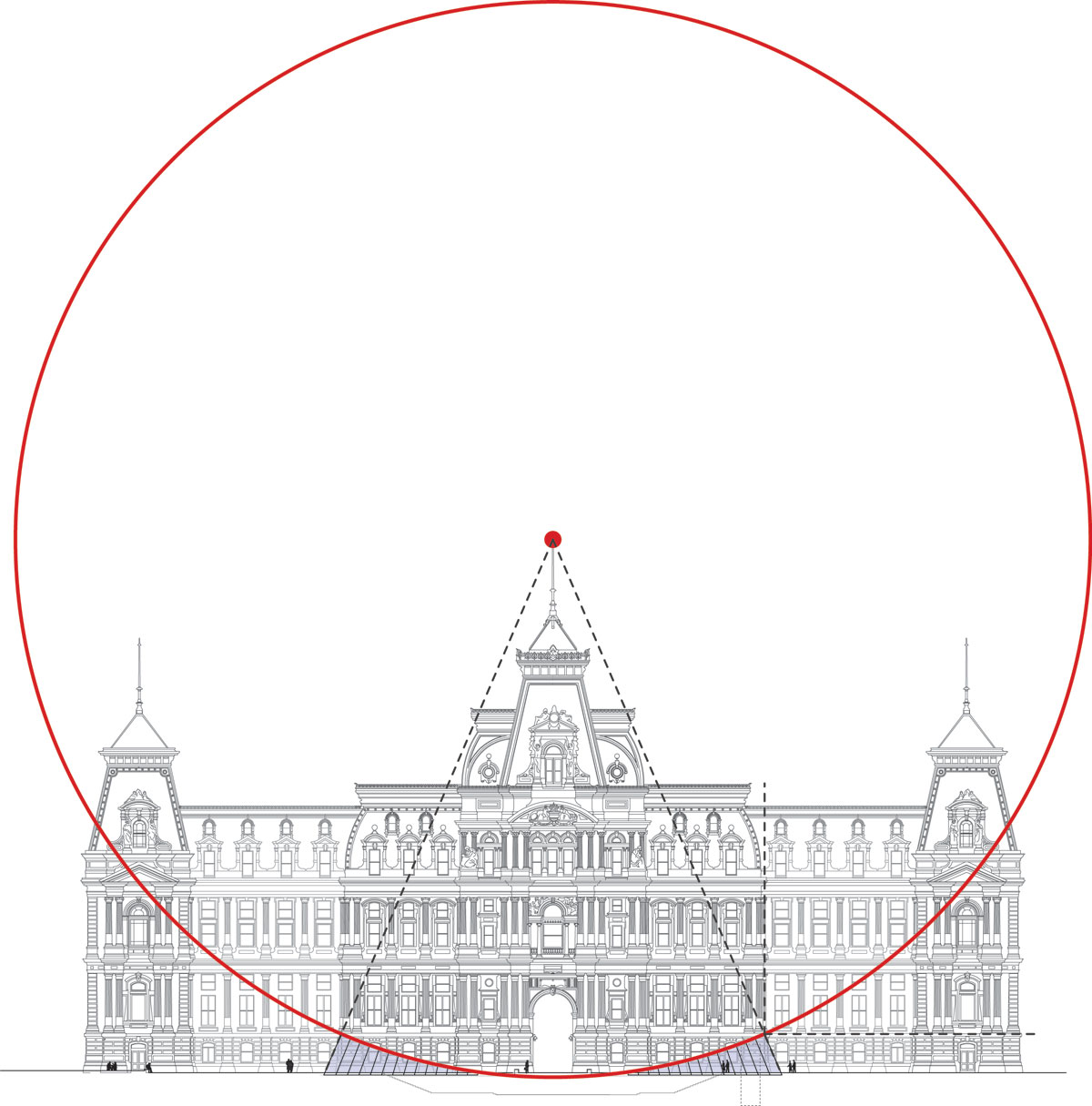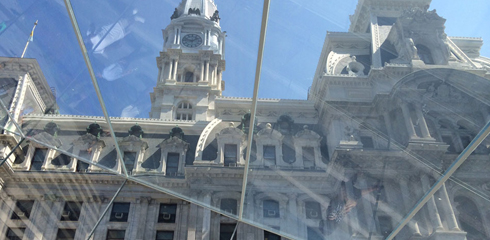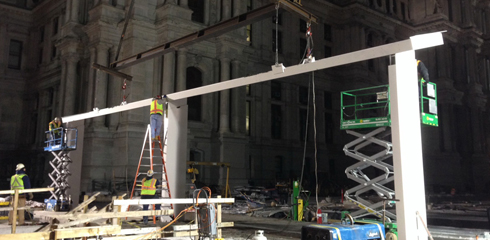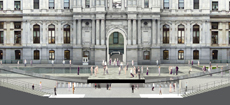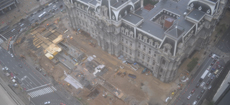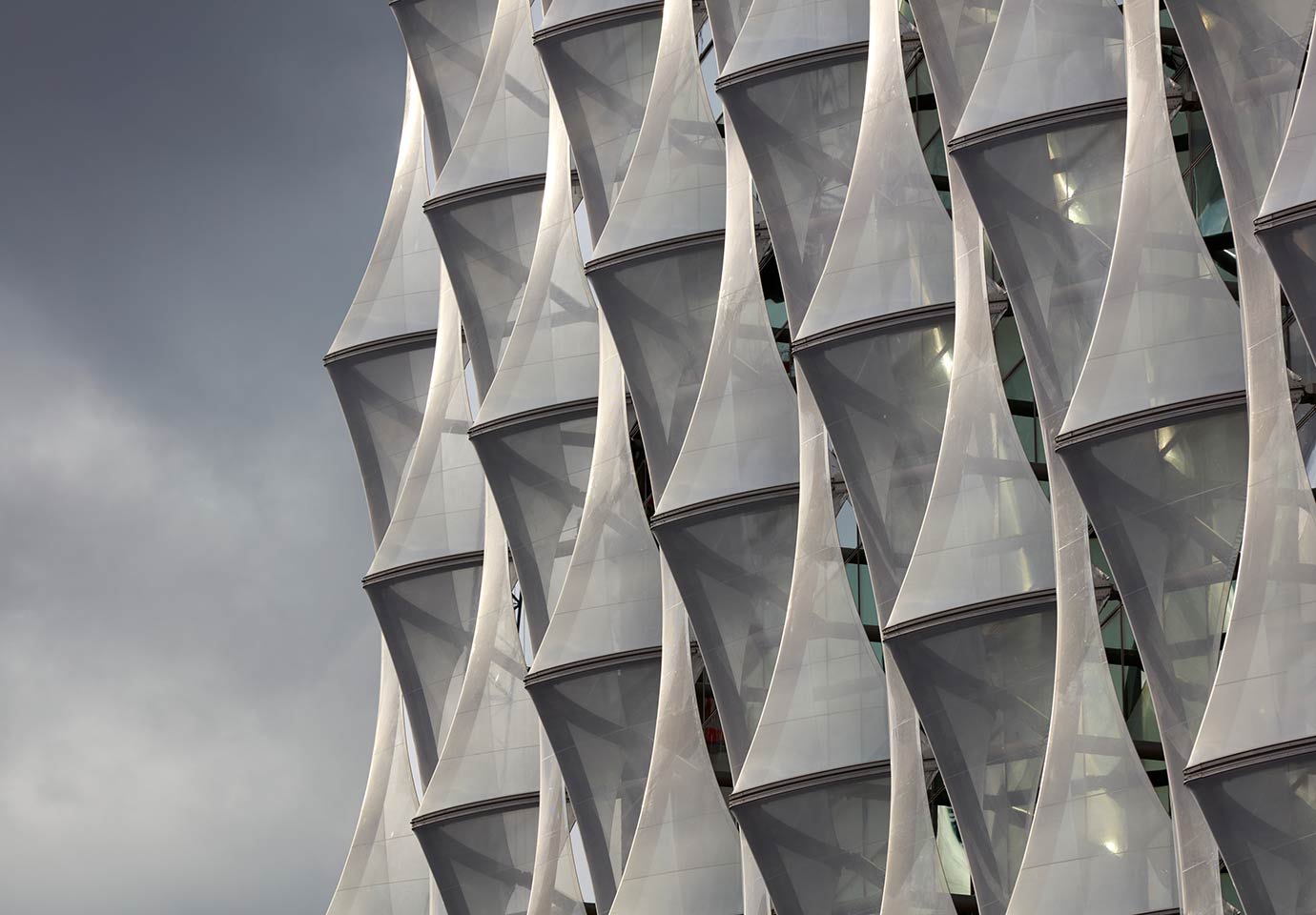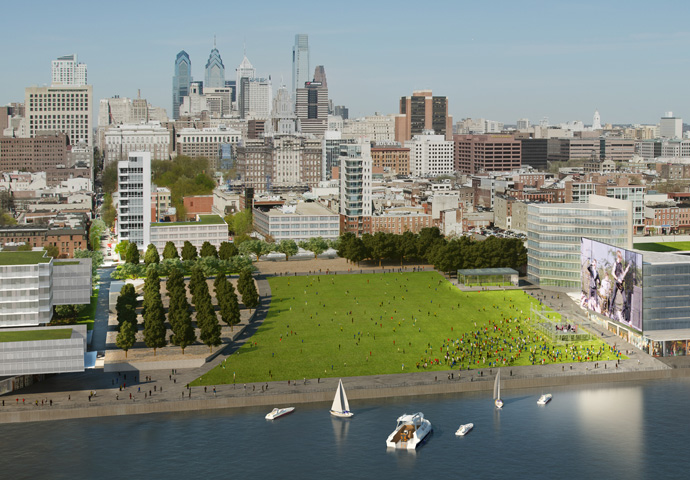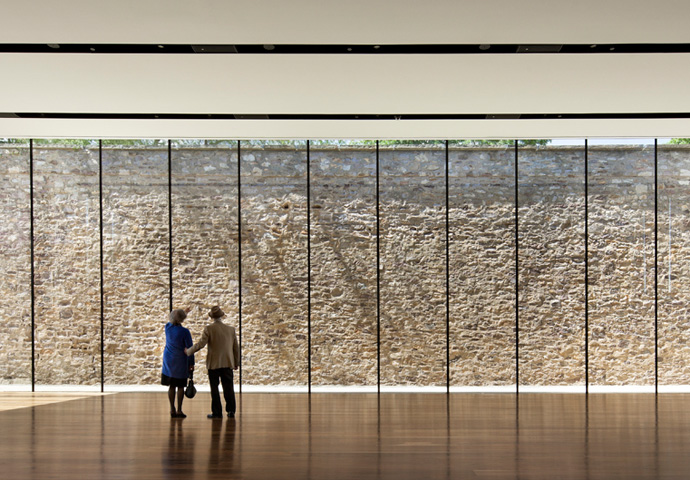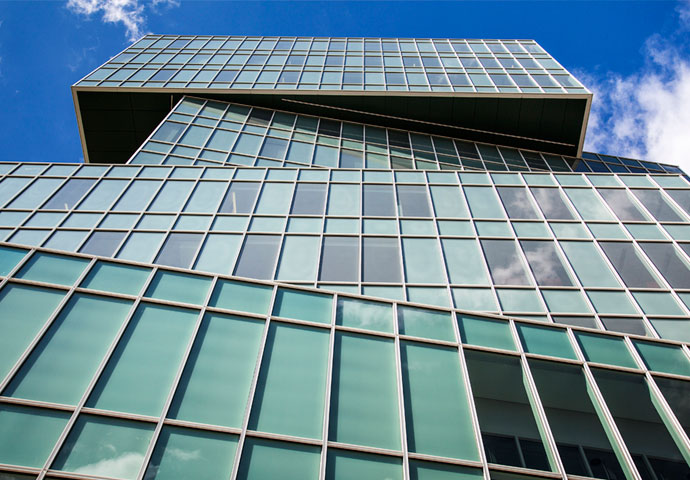How can we transform urban infrastructure to create an accessible and humane transit network at the symbolic center of the city?
Historical research revealed that an 18th-century pump house once distributed water throughout the city from this site, and Philadelphia's first public fountain also stood here. The new design reflects this precedent through the collection and purification of on-site rainwater, in channels around the pavilions, to irrigate the landscape and feed the fountain.
A historic nexus of transportation, Philadelphia's City Hall is the only place in the city where all the various forms of public transit—including subway, regional rail, and trolley lines—come together. However, connections between the transit systems at this important hub were incoherent or nonexistent with the previous design. The concourse was dark, uninviting, and exposed to the elements. The area above ground, formerly known as Dilworth Plaza, consisted of a large sunken court with a series of walls and stairs that acted as barriers to pedestrians in the approach to the concourse.
Transit
Working in collaboration with the Southeastern Pennsylvania Transportation Authority (SEPTA), we re-envisioned the intersection of the different transit systems to create a coherent experience for the 300,000 riders who pass through daily. We raised the sunken court, forming an even surface on the plaza and making a roof over the transit concourse. Glass pavilions were inserted to act as monumental entryways, signaling the transportation network below and vastly improving access to the four levels of public transit.
The transparent pavilions, counterpoised to the north and south of the central artery, appear to emerge from underground and are joined through a single arcing gesture that frames views of City Hall. Whereas before the concourse was dim and unwelcoming, the transparency of the glass allows light to flow into the new concourse, which is reorganized to provide clear and unencumbered access to public transportation. Out of respect for the singular materiality of City Hall, a structure built entirely of stone, the pavilions are constructed solely of uninterrupted laminated structural glass, without metal or glass fins supporting the walls or roofs. They reach nearly 20 feet in height and span the 17-foot width of the stair access to the transit hub below.
The glass pavilions that serve as gateways to the transit concourse are defined by the arc of a circle that completes itself at the top of the west façade of City Hall. This gesture suggests a monumental presence for the pavilions in spite of their modesty and allows them to sit comfortably adjacent to the grand City Hall.
Public Space
With nearly four acres of space at the intersection of the city's major art and cultural districts, Dilworth Park has the potential to be a stimulating gathering place in the heart of the city. However, the barren, hard surfaces of the former design did not encourage pedestrians to linger. Conceived in partnership with OLIN landscape architects and Urban Engineers, the redesign transforms Dilworth Park into a welcoming public gathering place and a vibrant green amenity that can be used year-round. The approach to the park becomes more pedestrian-friendly, and paving gently rises from the perimeter walkways toward the center of the site, where a shallow fountain and sloping lawn create a central gathering space. A ring of trees at the periphery defines a boundary and creates a place of tranquility in the center of the bustling city.
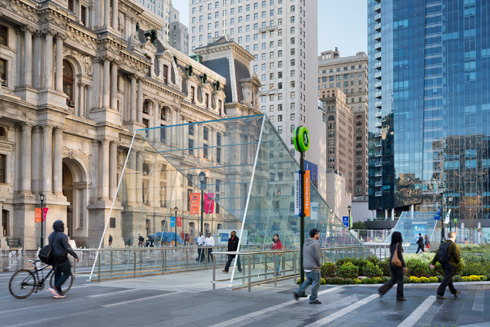
Perhaps among the largest constructions of laminated structural glass ever erected, the pavilions curve gently to the ground plane, seeming to slide under the central walkway.
© James Ewing Photography
Dilworth Park presented an opportunity to delve into the complex history of a significant public space, under continual change and evolution, in one of the country's oldest cities. In the tradition of the other town squares conceived by William Penn in his plan for Philadelphia, the renovation of Dilworth Park restores its stature as a place of great civic engagement, while bringing the urban infrastructure of its transportation network into the modern day.




